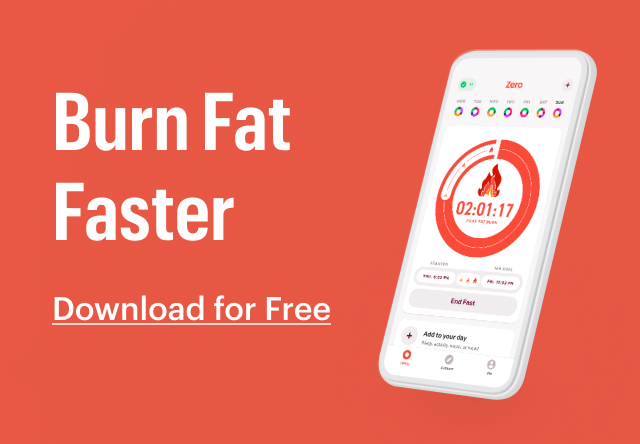Written and medically reviewed by Katya Meyers, RD
Unless you are plucking carrots from the ground and gathering eggs straight from the chickens’ roost, you are likely relying, at least in part, on processed and even ultra-processed foods. In fact, in the United States and other high-income countries, the majority of calories now come from this category. These highly processed foods have been artificially designed not with health in mind, but in favor of a long shelf life and hyper-palatability — that feeling of “can’t eat just one!”
Unfortunately, what makes ultra-processed foods so tasty and convenient can exact a heavy toll on your health. The good news is that there are ways to limit them and get your health back on track!

So, What Are Ultra-Processed Foods?
When it comes to food processing, it’s often not a question of “if” a food has been processed, but “how much.” Even foods that are generally considered healthy, such as pasteurized milk, pre-sliced vegetables, or dried fruits, go through some processing. You can think of it as a spectrum, with fresh meats, fruits, and vegetables at one end of the spectrum, and ultra-processed foods at the other.
Ultra-processed foods have been defined as “industrial formulations that are made by deconstructing whole foods into chemical constituents, altering them and recombining them with (cheap) additives into products that are alternatives to fresh and minimally processed foods and freshly prepared meals.” So, how can you tell if a food meets that definition?
One giveaway is an eye-blurringly long list of ingredients, including several that may require a degree in chemistry to recognize. Ultra-processed foods generally have 5 or more ingredients, including items such as high-fructose corn syrup, hydrogenated or interesterified oils, hydrolysed proteins, flavor enhancers, emulsifiers, thickeners, or bulking agents. In other words, these are not foods you’re making at home in your own kitchen — although they may resemble them at first glance.
Consider a blueberry muffin: homemade will look pretty similar to store-bought. However, there are other indicators besides the ingredients list that an ordinary-looking food is actually ultra-processed. One is its price, which is often comparatively low thanks to inexpensive “fillers.” The other is its eerily long shelf stability. Your fresh-baked blueberry muffin will last just a few days on the counter before spoiling; its cheaper seran-wrapped counterpart might last months or even years. Not to pick on muffins — other examples of ultra-processed food items include breakfast cereals, soft drinks, deli meats, and a wide variety of commercially-made snacks including crackers, potato chips, and cookies.
Why Are Ultra-Processed Foods So Addictive?
A lack of willpower is not what makes it tough to put down that bag of chips. Ultra-processed foods are specifically designed to encourage you to eat more. High levels of sugar, sodium, and fat combined with less fiber and water makes these foods energy dense and sweet — properties that light up your body’s evolutionarily designed circuitry, telling you to eat more.
While a biological drive for energy-dense foods made sense in the wooly mammoth-hunting days of food scarcity, most people are now surrounded by an excess of available calories, which makes the impulse more of a liability. Unfortunately, these signals can be hard to combat. Research shows that the neurobiological changes in response to consuming high-calorie soft drinks and other ultra-processed foods are similar to those observed in response to addictive drugs. These foods’ high glycemic index and large amounts of both fat and sugar have proven most likely to drive addictive behaviors. Perhaps unsurprisingly, such combinations of high sugar and fat are rarely found in nature.
The Short- and Long-Term Effects of a Highly Processed Diet
High ultra-processed food intake has been linked to a long list of both short- and long-term health problems. The most immediate effects are due to the artificially low fiber and high sugar content of most ultra-processed foods, which cause blood sugar levels to spike and then plummet, sending your body on an energy roller coaster. This heightened glycemic response, paired with the fact that ultra-processed foods do not keep you feeling full, can also lead to mood swings, fatigue, and increased hunger levels, all of which can lead to overeating. One two-week study examining the effects of ultra-processed food found that participants on a highly processed diet ate 500 calories more per day than those on a whole-food-based diet.
While the occasional splurge on a candy bar or bag of chips is unlikely to hurt your health in the long term, a steady diet of ultra-processed food has been linked to a multitude of detrimental consequences. Most notably, higher ultra-processed food consumption has been linked to poor metabolic health, including weight gain and a 51% increased risk of being overweight or obese. Even if your BMI is in the healthy range, eating a lot of ultra-processed food is strongly correlated with excess visceral fat, which is the fat stored deep inside your abdominal cavity. This is a particularly nefarious pattern of weight gain because when excess fat surrounds your internal organs, it increases your risk of numerous chronic diseases, including cardiovascular disease, diabetes, and certain types of cancers. And you can have high levels of visceral fat no matter what you weigh.
If the physical health risks aren’t enough cause for concern, one recent study found higher levels of ultra-processed food to be associated with increased psychological distress and neurological disease, independent of socioeconomic status, BMI, or other health behaviors. Taken together, the effects of regularly consuming these inexpensive, convenient, tasty foods are likely to blame — at least in part — for reducing life expectancy.
5 Tips for Ditching Ultra-Processed Foods (and Embracing Whole Foods!)
# 1. Start Small… But Make It Impactful
Not sure where to begin? You don’t have to change everything at once, but you do need to take action.
Swapping sugar-sweetened beverages like soda, sweet teas, sports drinks, and fancy coffee drinks for naturally flavored soda water, unsweetened teas, and black coffee is a great place to start. That’s because studies show sugar-sweetened beverages provide less satiety than solid foods and may actually increase hunger levels as soon as you stop consuming them.
Reducing your consumption of ultra-processed meats (e.g., pepperoni, breakfast sausages, hot dogs, and bacon) is another high-impact way to start. But don’t just cut them out; protein is crucial to your health and longevity! Instead, replace these highly processed high-protein items — which the World Health Organization has classified as Class 1 carcinogens — with less-processed options such as rotisserie chicken, lean cuts of beef, eggs, or even beans and lentils.
#2. Make Meals at Home
Restaurants, particularly fast-food or even fast-casual restaurants, are infamous for using lower-quality, hyper-palatable, ultra-processed ingredients. Therefore, one way to avoid these ingredients is to make more meals at home.
This is doable! Your meals don’t have to be complex, gourmet, or even pretty. In most cases, a little salt, olive oil, and grill or oven time can make almost anything taste delectable, whether it’s fish, meat, vegetables, or even many fruits. As for side dishes, a bowl of baby carrots or berries can work just as well as something you saw on Instagram. When you take the pressure off, you’ll find it’s easier than ever to make quick, simple, healthy meals at home.
#3. Solve for Spoilage
One of the most common complaints is that fresh, healthy food spoils too fast. And yes, many minimally processed foods lack the shelf stability afforded by ultra-processed foods — but there are solutions.
Can’t find the time to shop for fresh food? Most grocery stores will now both shop and deliver your groceries for a nominal cost. If you’re still having trouble keeping your fruit bowl and fridge stocked with minimally processed foods, focus on the freezer and pantry. Items such as frozen or canned fruits and vegetables as well as dried beans and lentils are just as healthy (and often less expensive) than their perishable counterparts.
Finally, doing some batch prep — roasting a whole sheet pan of vegetables or grilling all the chicken breasts in the package, for example — can provide a week’s worth of “grab and go” meals without risking spoilage.
#4. Give Your Taste Buds Time to Make the Switch
Some research indicates that it takes about two weeks for changes in salivary proteins to occur, and these changes are linked to your taste preferences. Therefore, as you eat more and more whole, minimally processed foods, you develop preferences for those flavors — even bitter flavors (the hardest to engender) in good-for-you brussel sprouts and asparagus. Plus, just as you can acquire a taste for healthy foods, you can also learn a distaste for less-healthy foods. (Think: too salty, too sweet, and too rich.) By challenging your taste buds week after week, you may start to find that those ultra-processed foods don’t taste quite as good as their minimally processed counterparts.
#5. Prioritize Progress Over Perfection
Finally, remember: This is not an “all or nothing” endeavor. Replacing some ultra-processed foods sometimes is better than attempting a 100% minimally processed diet that you can’t sustain for more than a few days. When and where you can, choose unpackaged foods with fewer ingredients, like grilled chicken instead of chicken nuggets; plain yogurt with fruit instead of sugar-added yogurt; or oatmeal with honey and raisins instead of sugary boxed cereals. Making small daily swaps can have a big cumulative impact in the long run.
Conclusion
The evidence is clear: Ultra-processed foods are bad for your health. If you want to live a longer, healthier life, you need to find a way to limit them in your diet. However, this doesn’t mean you need to go cold turkey! Instead, focus on incrementally improving the quality of your food by looking at labels, cooking at home, and making small, sustainable swaps in favor of whole, unprocessed foods. In time, you’ll be amazed you ever ate any other way.
- The Fasting Guide to Menopause, Perimenopause, and Postmenopause - April 8, 2024
- Try This Instead of That: How to Bookend Your Fasts - March 25, 2024
- 60 Names for Sugar: The Myths, The Facts, and What You Should Know - February 12, 2024






